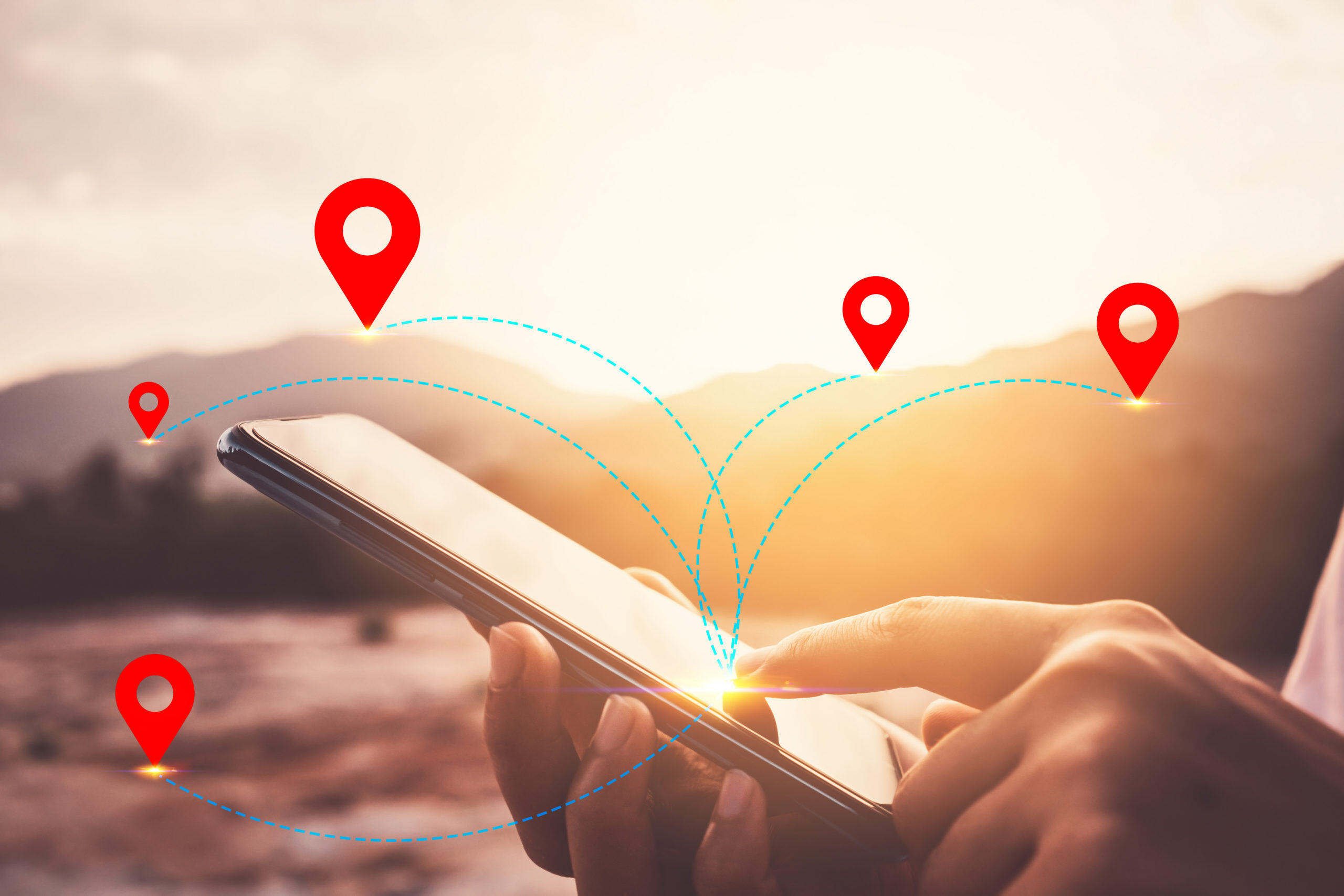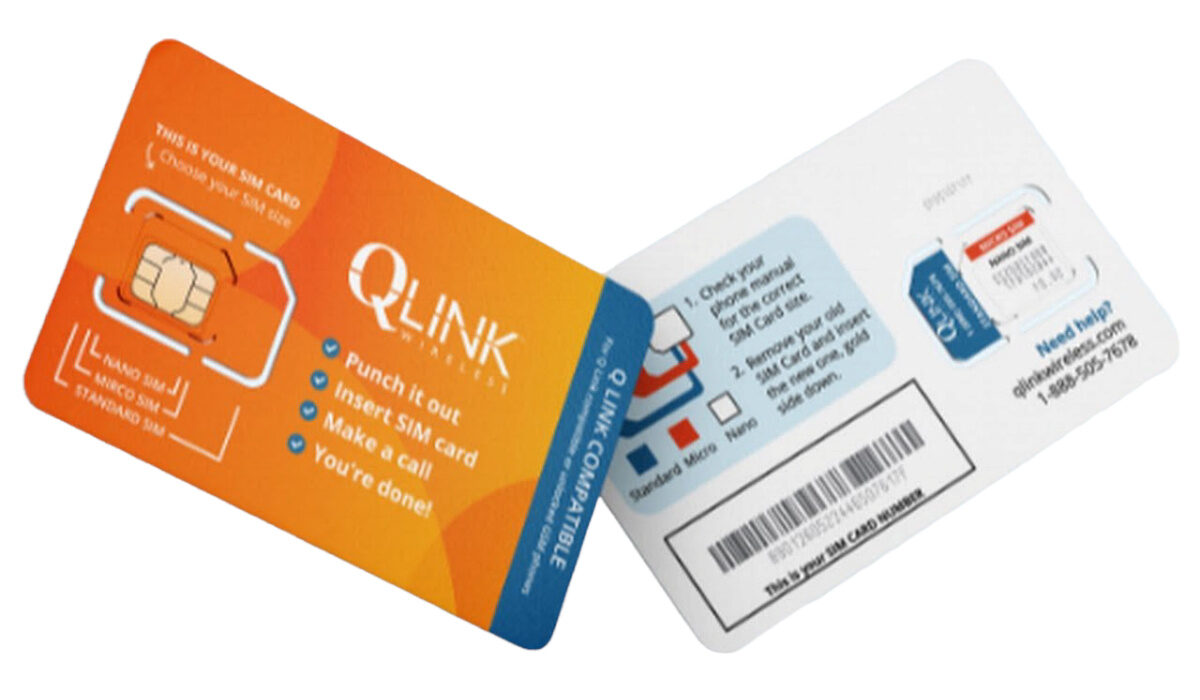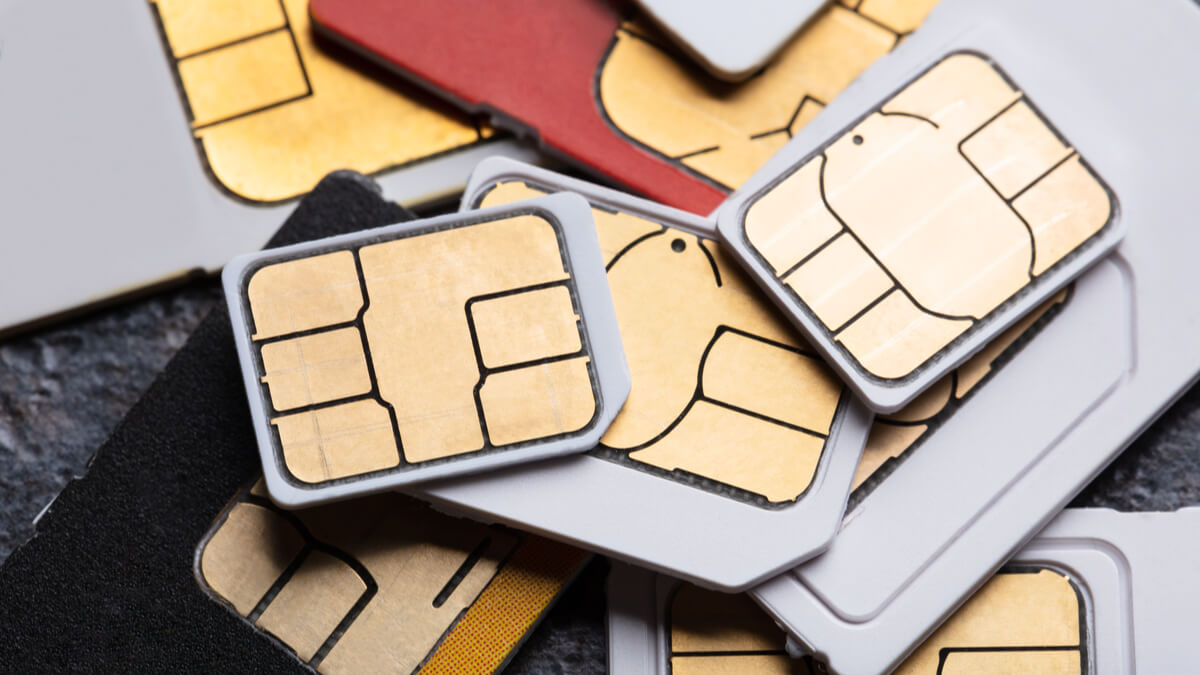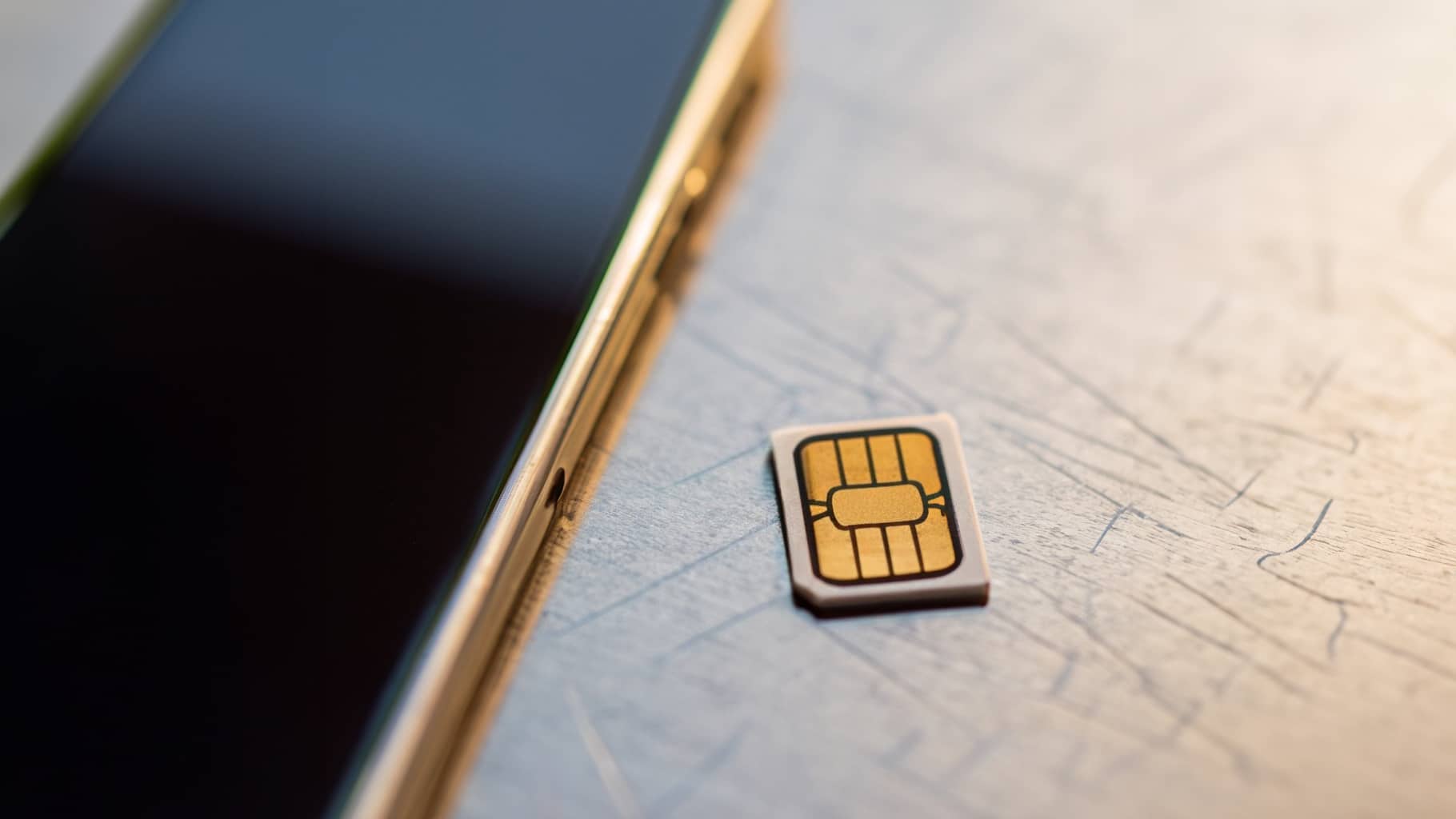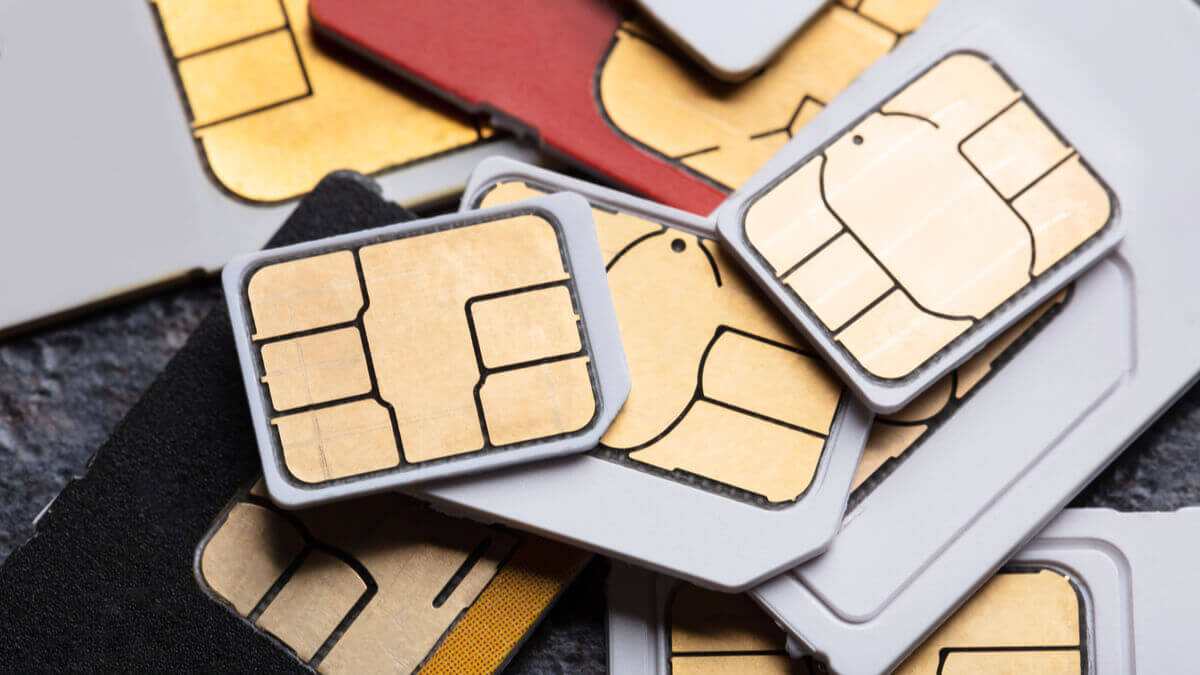What is a SIM Card?
A SIM card, or Subscriber Identity Module card, is a small, removable card that is inserted into mobile devices, such as smartphones and tablets, to connect to a mobile network. It serves as a unique identifier for the user and the device, enabling access to voice, data, and messaging services.
The SIM card contains essential information, including the International Mobile Subscriber Identity (IMSI) and the authentication key, which are crucial for establishing a secure connection with the mobile network. Additionally, it stores the user's phone number and other personal data, making it an integral component for mobile communication.
SIM cards come in various sizes, including standard SIM, micro-SIM, and nano-SIM, to accommodate different device specifications. The standard SIM card, which was prevalent in earlier mobile devices, has significantly reduced in size over the years, with the nano-SIM being the smallest and most commonly used type today.
When a SIM card is inserted into a compatible mobile device and activated by a mobile network operator, it allows the device to make and receive calls, send and receive text messages, and access mobile data services. Furthermore, the SIM card enables roaming capabilities, allowing users to connect to different networks when traveling internationally, albeit with certain considerations and potential charges.
In essence, a SIM card is the gateway to mobile connectivity, providing users with the means to stay connected, access essential services, and utilize the full potential of their mobile devices, both domestically and abroad. Understanding the significance of a SIM card is crucial for individuals seeking to optimize their mobile experience, especially when venturing overseas.
Benefits of Using a Local SIM Card Overseas
Using a local SIM card when traveling abroad offers a multitude of advantages that can significantly enhance the mobile experience for international travelers. Here are the key benefits of utilizing a local SIM card overseas:
-
Cost-Effective Communication: Opting for a local SIM card allows travelers to avoid exorbitant roaming charges imposed by their home network providers. By utilizing a local network, individuals can benefit from affordable local call and data rates, enabling them to stay connected without the fear of incurring hefty communication expenses.
-
Uninterrupted Connectivity: With a local SIM card, travelers can enjoy uninterrupted connectivity, ensuring that they remain accessible via calls, texts, and data services. This seamless access to communication channels is particularly valuable for staying in touch with loved ones, navigating unfamiliar territories using mapping applications, and accessing essential travel-related information online.
-
Local Phone Number: Acquiring a local SIM card provides travelers with a local phone number, which can be advantageous for various reasons. It enables them to make local calls inexpensively, receive calls from local contacts without incurring international charges, and facilitates communication with local service providers, such as hotels, restaurants, and transportation services.
-
Enhanced Data Usage: Utilizing a local SIM card grants access to local data plans, allowing travelers to make the most of their mobile data usage while exploring a new destination. Whether for browsing the web, sharing travel experiences on social media, or accessing real-time information, having a local SIM card with a data plan empowers travelers to leverage their mobile devices to the fullest.
-
Flexibility and Convenience: A local SIM card provides the flexibility to top up credit as needed, ensuring continuous access to mobile services throughout the trip. Additionally, the convenience of having a local number and access to local networks simplifies communication and fosters a sense of familiarity, contributing to a smoother and more enjoyable travel experience.
In summary, utilizing a local SIM card when traveling overseas offers a host of benefits, including cost-effective communication, uninterrupted connectivity, access to a local phone number, enhanced data usage, and overall flexibility and convenience. By leveraging a local SIM card, travelers can optimize their mobile experience, stay connected affordably, and navigate international destinations with ease.
How to Get a Local SIM Card
Acquiring a local SIM card when traveling overseas is a relatively straightforward process that can significantly enhance the mobile experience for international travelers. The following steps outline the typical procedure for obtaining a local SIM card in a foreign destination:
-
Research and Identify Local Network Providers: Before embarking on the trip, it is advisable to conduct research on the prevalent mobile network operators in the destination country. Identifying reputable and widely available network providers enables travelers to make informed decisions when selecting a suitable SIM card.
-
Visit a Mobile Retailer or Provider: Upon arrival in the destination country, travelers can visit mobile retailers, authorized stores, or network provider outlets to purchase a local SIM card. These establishments are commonly found in airports, shopping centers, and urban areas, offering a range of SIM card options and prepaid plans to cater to diverse needs.
-
Present Identification and Complete Registration: When obtaining a local SIM card, individuals are typically required to present a valid form of identification, such as a passport, to comply with local regulations. Additionally, some countries mandate SIM card registration, requiring travelers to complete a registration process at the point of purchase to activate the card.
-
Select a Suitable Plan: Mobile network operators offer a variety of prepaid plans tailored to different usage patterns, including options for voice calls, text messaging, and data services. Travelers can choose a plan that aligns with their communication and data requirements, considering factors such as duration of stay, anticipated usage, and budget.
-
Insert and Activate the SIM Card: Once the local SIM card is acquired and the necessary registration process is completed, travelers can insert the SIM card into their unlocked mobile device. Activation instructions provided by the network operator or retailer should be followed to ensure seamless connectivity and access to the chosen plan's services.
-
Top Up Credit as Needed: To maintain continuous access to mobile services, travelers can conveniently top up credit for voice, text, and data usage at authorized retail outlets, convenience stores, or through mobile top-up services provided by the network operator.
By following these steps, travelers can easily procure a local SIM card, enabling them to enjoy cost-effective communication, uninterrupted connectivity, and access to local services while exploring a new destination. It is important to note that specific procedures and requirements for obtaining a local SIM card may vary by country and mobile network operator, necessitating awareness of local regulations and practices to facilitate a smooth acquisition process.
Things to Consider When Using a SIM Card Overseas
When utilizing a SIM card overseas, several important considerations come into play to ensure a seamless and rewarding mobile experience while traveling. These factors encompass various aspects, including network compatibility, coverage, data roaming, and regulatory compliance, all of which significantly impact the effectiveness and cost-efficiency of using a local SIM card abroad.
-
Device Compatibility: Before obtaining a local SIM card, it is crucial to ascertain whether the mobile device is unlocked and compatible with the network technology prevalent in the destination country. Different regions utilize distinct network standards, such as GSM or CDMA, and varying frequency bands for voice and data services. Ensuring compatibility is essential to guarantee that the local SIM card can be utilized effectively with the traveler's device.
-
Network Coverage: Evaluating the network coverage and reliability of local mobile operators is vital, particularly when venturing into remote or rural areas. While major cities often boast extensive coverage, travelers exploring off-the-beaten-path locations should assess the availability of network signals to maintain connectivity throughout their journey. Researching network coverage maps and seeking insights from local residents or fellow travelers can provide valuable guidance in this regard.
-
Data Roaming and Fair Usage Policies: Some network operators impose fair usage policies and data roaming restrictions on prepaid SIM cards, especially for visitors and short-term travelers. Understanding the terms and limitations associated with data usage, including fair usage thresholds and potential speed reductions, is essential for managing data consumption effectively and avoiding unexpected service disruptions.
-
SIM Card Registration Requirements: Certain countries mandate the registration of SIM cards, necessitating travelers to comply with local registration procedures to activate the card and access mobile services. Familiarizing oneself with registration requirements and adhering to the prescribed processes, which may involve presenting identification documents and completing registration forms, is crucial to ensure seamless activation of the local SIM card.
-
Regulatory Compliance and Documentation: Travelers should acquaint themselves with the regulatory framework governing the use of SIM cards in the destination country. This involves understanding local telecommunications regulations, compliance with registration mandates, and the possession of necessary documentation, such as passports or identification cards, to facilitate the lawful acquisition and use of a local SIM card.
-
Balance Expiry and Top-Up Mechanisms: Prepaid SIM cards often have expiration periods for credit balances, requiring travelers to be mindful of balance expiry dates and top-up mechanisms to maintain uninterrupted access to mobile services. Familiarizing oneself with the validity period of credit balances and the available options for topping up credit is essential for managing communication expenses effectively.
By considering these factors when using a SIM card overseas, travelers can navigate the complexities of international mobile connectivity with confidence, ensuring that they leverage the benefits of a local SIM card while mitigating potential challenges and optimizing their communication and data usage throughout their travels.
Tips for Using a SIM Card Overseas
-
Plan Ahead: Research the local network options and prepaid plans available in your destination country before your trip. Understanding the coverage, pricing, and data packages offered by different mobile operators will help you make an informed decision when purchasing a local SIM card upon arrival.
-
Check Device Compatibility: Ensure that your mobile device is unlocked and compatible with the network technology used in the country you are visiting. Different regions may operate on distinct network standards and frequency bands, so verifying compatibility is essential for seamless connectivity.
-
Carry Identification Documents: Be prepared to present valid identification, such as a passport, when purchasing and registering a local SIM card. Some countries have strict registration requirements, and compliance with these regulations is necessary to activate the card and access mobile services.
-
Understand Fair Usage Policies: Familiarize yourself with the fair usage policies and data roaming restrictions imposed by local network operators. Certain prepaid plans may have limitations on data usage, including fair usage thresholds and potential speed reductions, so managing your data consumption accordingly is crucial.
-
Top Up Credit Wisely: Monitor the expiration period of your prepaid credit balance and familiarize yourself with the available top-up mechanisms. Being mindful of balance expiry dates and understanding the top-up options will help you maintain uninterrupted access to mobile services throughout your trip.
-
Save Emergency Contacts: Program local emergency contacts, such as the local authorities, emergency services, and your accommodations, into your phone. Having these numbers readily available can be invaluable in urgent situations, ensuring quick and efficient communication when needed.
-
Use Wi-Fi Where Possible: Take advantage of Wi-Fi hotspots available at hotels, cafes, and public areas to conserve your mobile data usage. Utilizing Wi-Fi for data-intensive activities, such as video calls and large file downloads, can help manage your data allocation effectively.
-
Consider Dual SIM Devices: If your mobile device supports dual SIM functionality, consider using a dual SIM adapter or investing in a dual SIM device. This allows you to retain access to your home network while also benefiting from the affordability and convenience of a local SIM card abroad.
-
Protect Your SIM Card: Safeguard your local SIM card and the associated documentation, as losing or damaging the card can disrupt your mobile connectivity. Store the SIM card and any registration documents securely to prevent any inconvenience during your travels.
-
Stay Informed: Stay updated on local telecommunications regulations, network coverage updates, and any changes in prepaid plan offerings during your stay. Being informed about relevant developments can help you adapt your mobile usage to optimize your connectivity and communication experience.
By adhering to these tips for using a SIM card overseas, travelers can navigate the intricacies of international mobile connectivity with confidence, ensuring a seamless and rewarding mobile experience while exploring new destinations.
Conclusion
In conclusion, utilizing a local SIM card when traveling overseas presents a myriad of benefits, ranging from cost-effective communication and uninterrupted connectivity to access to local services and enhanced data usage. The ability to procure a local SIM card and leverage the mobile networks of the destination country empowers travelers to stay connected affordably and efficiently while exploring new territories. By considering the factors outlined in this guide, such as device compatibility, network coverage, data roaming policies, and regulatory compliance, travelers can navigate the complexities of international mobile connectivity with confidence, ensuring a seamless and rewarding mobile experience throughout their journeys.
The process of obtaining a local SIM card involves careful planning, identification compliance, and an understanding of local network options and prepaid plans. By following the recommended steps and tips, travelers can optimize their communication and data usage while mitigating potential challenges associated with using a local SIM card overseas. Additionally, staying informed about local telecommunications regulations and network developments allows travelers to adapt their mobile usage effectively, ensuring that they make the most of their international mobile connectivity.
Ultimately, the utilization of a local SIM card overseas transcends mere convenience; it embodies a strategic approach to mobile communication, enabling travelers to stay connected, access essential services, and navigate international destinations with ease. The freedom and flexibility afforded by a local SIM card empower individuals to embrace their travel experiences wholeheartedly, fostering a sense of familiarity and connectivity in unfamiliar environments.
In essence, the decision to use a local SIM card overseas represents a conscious choice to enhance the mobile experience, enabling travelers to communicate, explore, and engage with their surroundings confidently and affordably. By embracing the opportunities offered by local mobile networks, travelers can immerse themselves in the richness of international travel while staying connected to the world at large.









